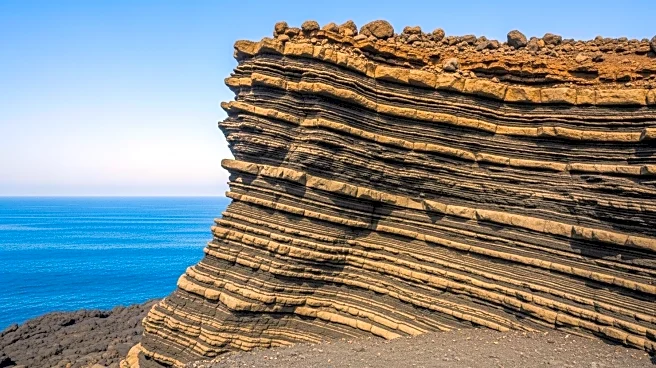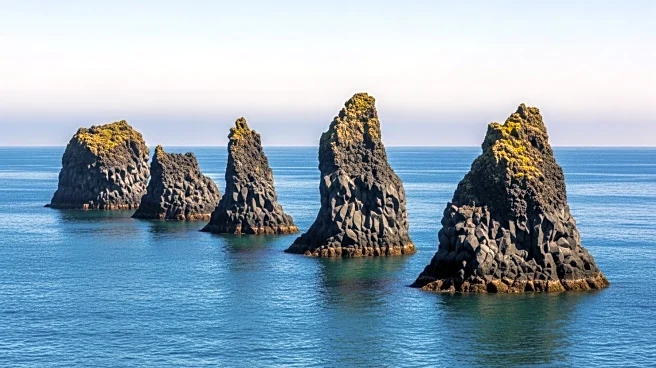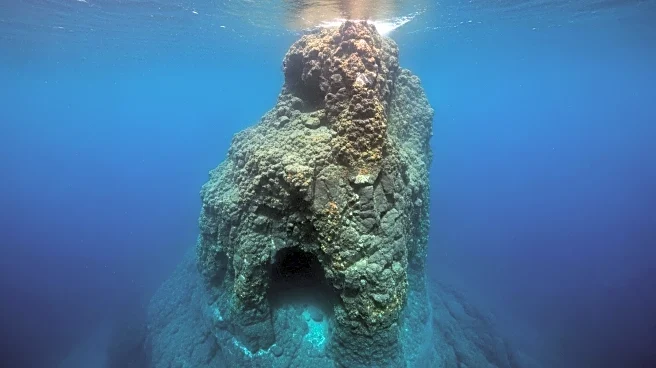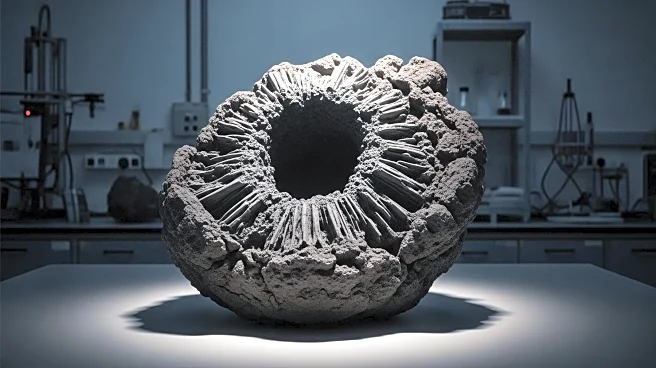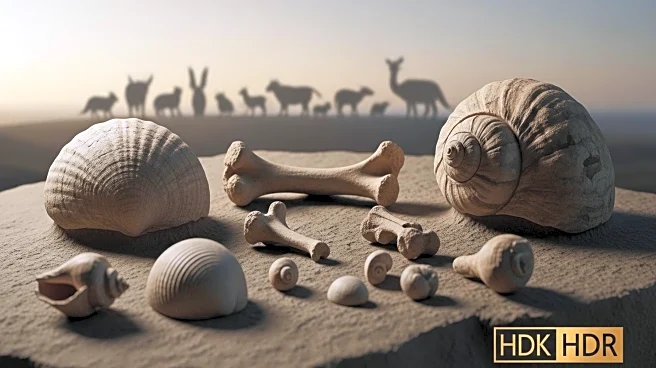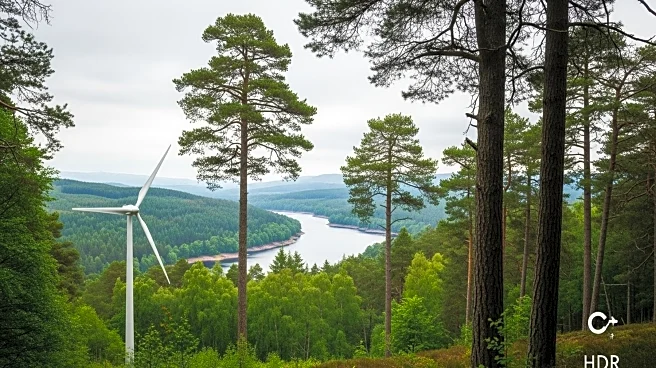What is the story about?
What's Happening?
Researchers from the University of Cambridge have uncovered the reasons behind extensive volcanic activity in the North Atlantic region, dating back 60 million years. The study focused on the Icelandic mantle plume, which caused widespread volcanism from Scotland and Ireland to Greenland. The team discovered that variations in tectonic plate thickness facilitated the spread of molten rock over a vast area. Using seismic tomography and thermography, they mapped the Earth's interior, revealing that thinner tectonic plates acted as conduits for the plume's material, leading to the formation of ancient volcanoes.
Why It's Important?
Understanding the historical volcanic activity in the North Atlantic provides insights into the region's geological evolution and its impact on climate and ocean circulation. The findings have implications for geothermal energy resource mapping, as areas with thinner lithosphere may offer significant geothermal potential. This research also enhances the understanding of seismic hazards in Britain and Ireland, as the scars left by the mantle plume influence current earthquake distribution.
What's Next?
The research team is applying their seismic thermography methods to assess global geothermal energy resources, potentially identifying new areas for sustainable energy development. This could lead to increased investment in geothermal energy projects, contributing to the transition to renewable energy sources. Additionally, the study's findings may inform future geological and seismic research, improving hazard assessment and mitigation strategies.
Beyond the Headlines
The study highlights the interconnectedness of geological processes and their long-term impacts on the environment and energy resources. By understanding the historical behavior of mantle plumes, scientists can better predict future geological events and their implications for energy and climate. This research also emphasizes the importance of interdisciplinary approaches in solving complex scientific mysteries.
AI Generated Content
Do you find this article useful?
